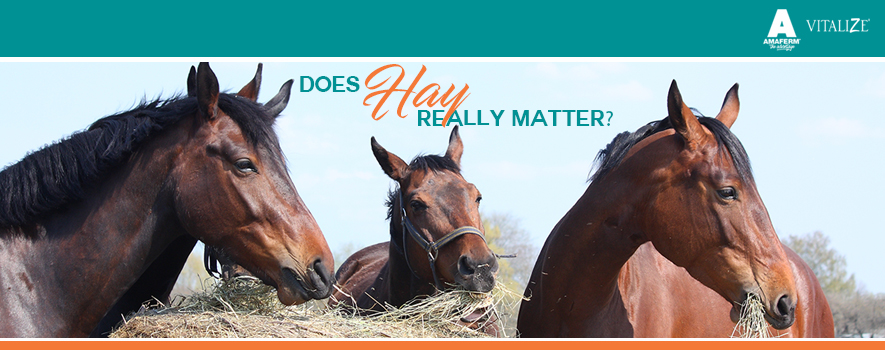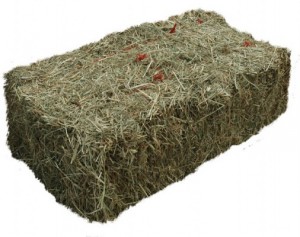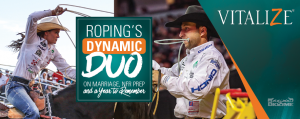
Hay is the most important part of the horse’s diet. Typically it should be at least 50% of the entire diet. Hay is the best source of energy, protein, vitamins, minerals and, most importantly, the fiber that is necessary for normal gut function in the horse. With hay being such an important part of the diet it is important to know the quality of the hay you are feeding as quality can vary considerably between different loads.
Estimates of hay quality often vary because visual determinations of color, leafiness, etc. are not exact. However, with some experience and very careful observation, a person can readily distinguish between hay of good, fair or poor quality. Since these factors are related to the nutrient value and palatability of hay, they are important.
The following factors relate to hay quality. However, remember one factor alone may or may not give a true estimate of quality. Therefore, it is important to judge and consider all factors before making an appraisal of hay quality.
Kind of Hay
In general, legume or legume-grass hays are higher in protein than straight grass hay. Also, mixed legume-grass hays usually have a better balance of minerals than grass alone. However, both protein and mineral levels can be readily influenced by time of cutting, fertilization and hay making practices. Thus, hay must be judged on characteristics other than simply whether they are legume or grass.
Stage of Maturity
The stage of maturity of both grasses and legumes at time of harvest is an important factor in determining the feed value of hay. As shown in the table below, TND (total digestible nutrients or energy) and protein content of hay decrease with later dates of harvest.
Digestible Contents of Dry Hay
In addition, the intake, or amount of forage eaten by the animal, is also influenced by stage of maturity. Late cut, mature forages are unpalatable, and are rejected and wasted.
Leafiness
Early cut alfalfa is about half leaves and half stems. Since leaves are higher than stems in both protein and energy, about 65% of the total protein and 60% of the energy of early cut alfalfa are in the leaves. If harvest is delayed plants lodge or if hay is weather damaged or mishandled during harvest, leaf loss may be 75% or greater. Good quality hay should be leafy, closely resembling plants as they grow in the field. Most of the leaves should be attached to the stems, for loose or shattered leaves can be lost during feeding and are not readily consumed by some animals, particularly horses.
Color
Well-cured, early-cut hay should be green in color on the inside of the bale. Brown or discolored hay is usually of poor quality because of weather damage, heating or late harvest.
Fineness of Stems
Stem diameter or thickness varies considerably with the kind of hay grown. However, as general rule, fine stems of a given kind of hay indicate early maturity and good palatability.
Odor or Smell
Good hay has a pleasant odor. Any unusually strong, musty or offensive odor should be a warning of poor quality hay.
Dust or Mold
Animals, particularly horses, are sensitive to dusts and molds often found in poorly cured hay. Hay bales should be taken and closely examined for mold growth or excessive dust. In newly baled hay, dampness or heating are indications that the hay will mold and become dusty. Moldy hay is not only low in feed value but can cause serious animal health problems.
Foreign Material
Good hay should be free of weeds, grain stubble or other impurities that are low in nutritive value or reduce palatability. These materials can be identified best by examining the inside of several bales.
Forage Testing
Laboratory analysis can be used to measure the nutritional value of hay. Forages can be tested for moisture, protein, energy, fiber and minerals. BioZyme provides this service free of charge to its customers. Contact Kevin Glaubius, Director of Nutrition and Technical Sales, for assistance on this service.


